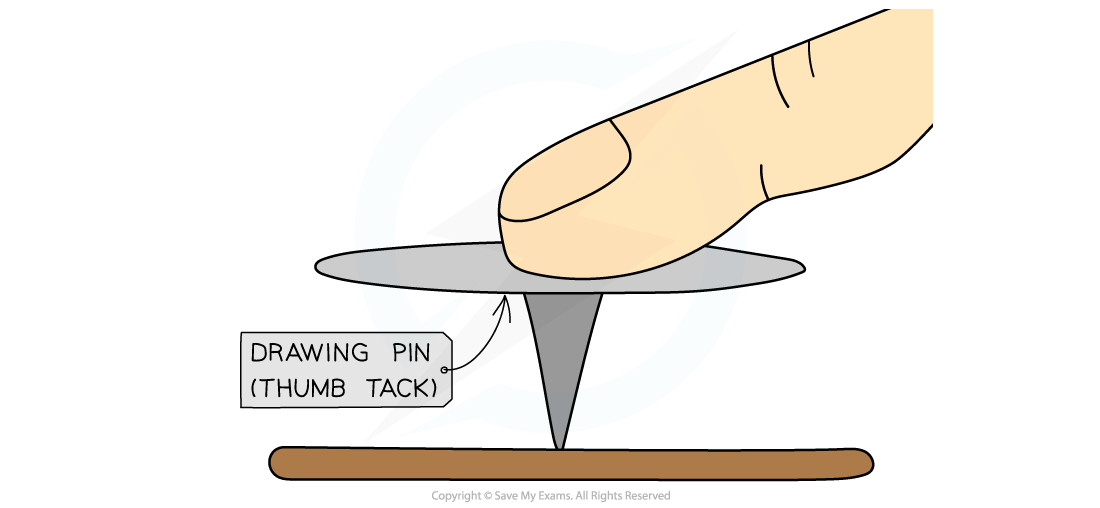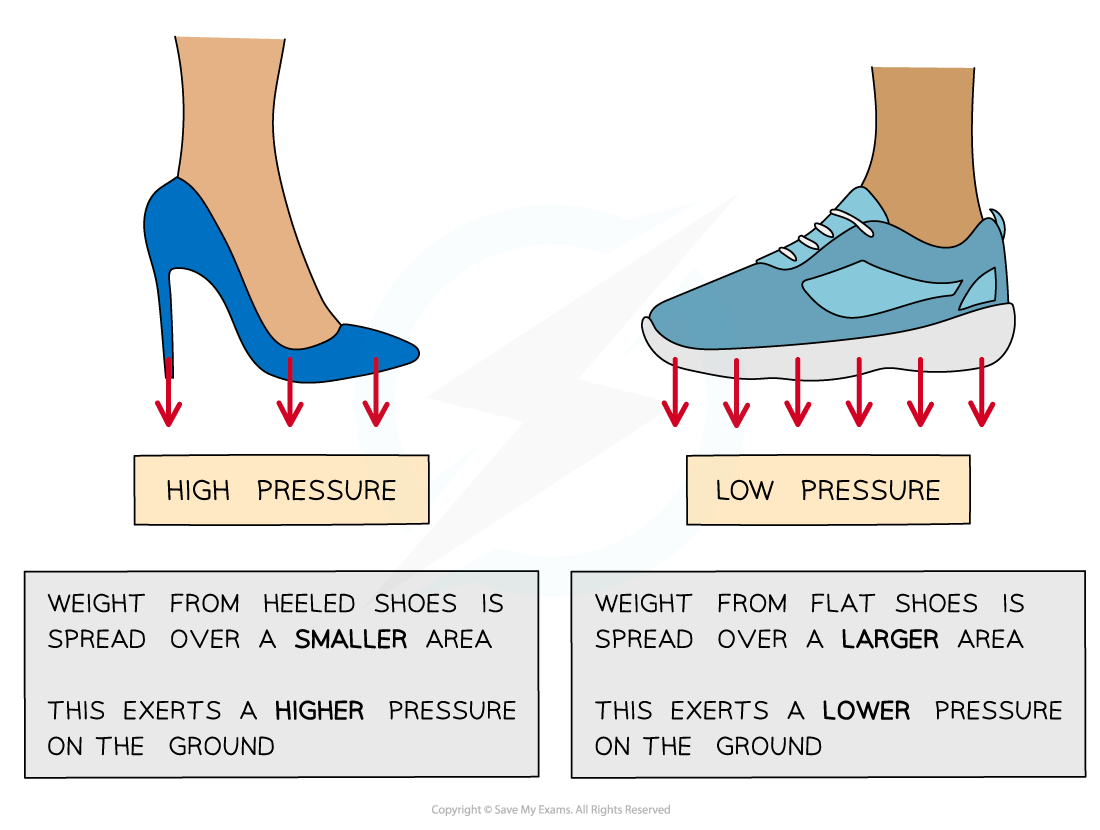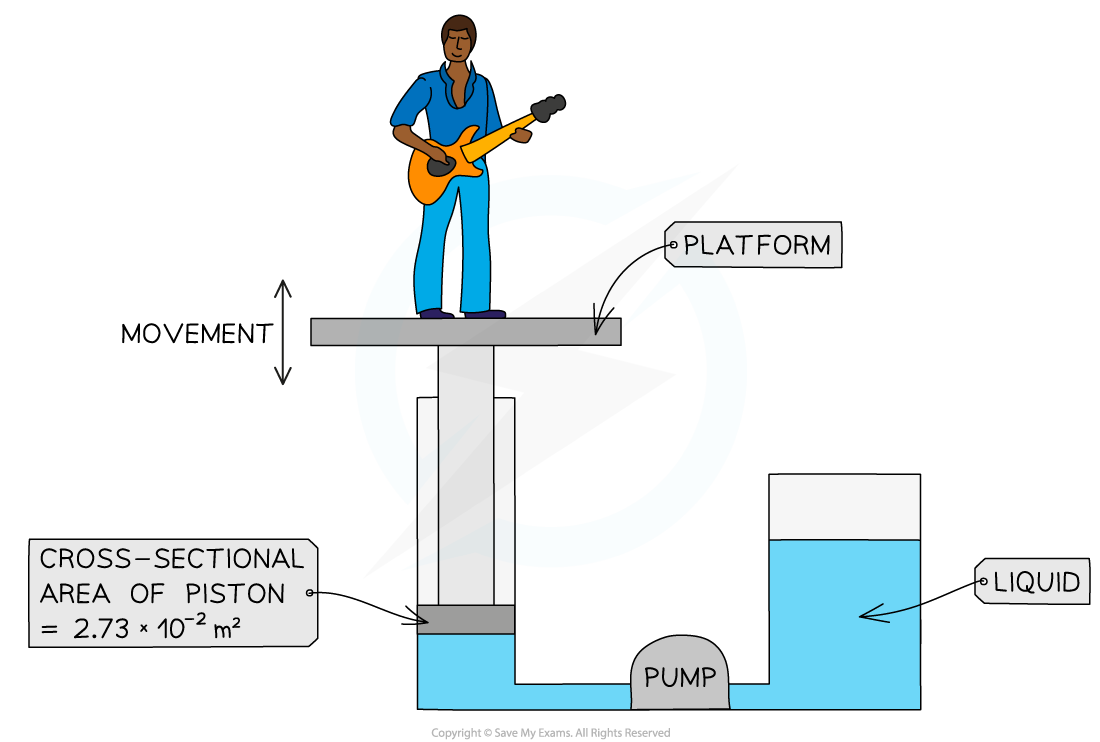Pressure (Edexcel IGCSE Physics (Modular)) : Revision Note
Pressure
Pressure is defined as
The concentration of a force or the force per unit area
Pressure, force and area are related by the equation:
Where:
P = pressure, measured in pascals (Pa)
F = force, measured in newtons (N)
A = cross-sectional area, measured in metres squared (m2)
The cross-sectional area is the area that the force is applied at right angles to
Pressure, force, area formula triangle

A formula triangle can help rearrange the pressure equation
For more information on how to use a formula triangle refer to the revision note on speed
Examples of applications of pressure
For example, when a drawing pin is pushed downwards:
It is pushed into the surface, rather than up towards the finger
This is because the sharp point is more concentrated (a small area) creating a larger pressure
Applying a force to a drawing pin

When you push a drawing pin, it goes into the surface (rather than your finger)
Example 1: Tractors
Tractors have large tyres
This spreads the weight (force) of the tractor over a large area
This reduces the pressure which prevents the heavy tractor from sinking into the mud
Example 2: Nails
Nails have sharp pointed ends with a very small area
This concentrates the force, creating a large pressure over a small area
This allows the nail to be hammered into a wall
This equation for pressure tells us that
if a force is spread over a large area it will result in a small pressure
if it is spread over a small area it will result in a large pressure
The surface area of the shoe affects the pressure applied to the ground

High heels produce a higher pressure on the ground because of their smaller area, compared to flat shoes
Worked Example
The diagram below shows the parts of the lifting machine used to move the platform up and down.

The pump creates pressure in the liquid of 5.28 × 105 Pa to move the platform upwards.
Calculate the force that the liquid applies to the piston.
Answer:
Step 1: List the known quantities
Cross-sectional area = 2.73 × 10-2 m2
Pressure = 5.28 × 105 Pa
Step 2: Write down the relevant equation
Step 3: Rearrange for the force, F
Step 4: Substitute the values into the equation
Step 5: Round to the appropriate number of significant figures and quote the correct unit
Examiner Tips and Tricks
Look out for the units for the force! Large pressures produce large forces - this is sometimes in kN! (1 kN = 1000 N)

You've read 0 of your 5 free revision notes this week
Sign up now. It’s free!
Did this page help you?

